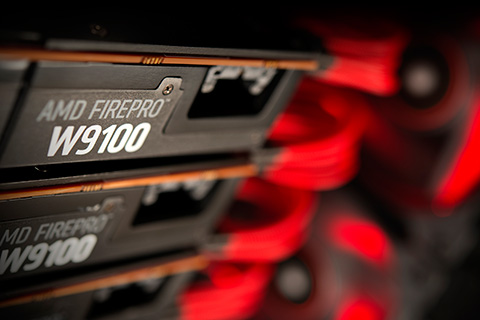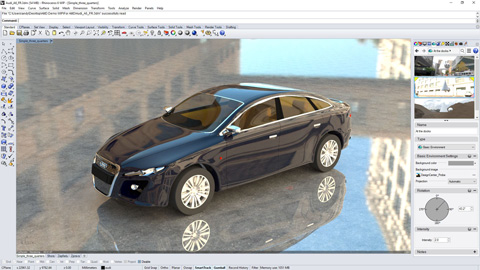
Autodesk VRED, a high-end 3D visualisation and virtual prototyping tool that is pushing the limits of GPU hardware.
Last month Nvidia launched a 24GB version of its top end Quadro M6000 GPU. Now AMD has gone one step further introducing a 32GB model of its FirePro W9100, double that of the original W9100.
But, in the world of design and engineering, why would you need a GPU with such a colossal memory footprint – more than the system memory (RAM) of a typical CAD workstation?
The answer comes down to increasingly demanding Virtual Reality (VR) workflows, which not only push the computational limits of GPU hardware, but can place huge demands on memory size and memory bandwidth.
A good application example is Autodesk VRED, which is used for automotive design reviews and digital prototyping. VRED thrives in immersive VR environments – such as Powerwalls, CAVEs and head mounted displays – but extreme resolutions and realistic materials and lighting can place huge demands on GPU resources.
AMD also recently announced the Radeon Pro Duo, a liquid-cooled, dual-GPU graphics card designed specifically for VR content creation and consumption. At 4GB per GPU (8GB in total) it doesn’t have the memory footprint to compete with the FirePro W9100 32GB but with 16 TFLOPs of single precision compute performance it can’t be beaten in terms of its processing capabilities, which is critical for reducing latency (and hence motion sickness).

The AMD FirePro W9100 now comes with a whopping 32GB of GDDR5 memory
If there was any doubt that AMD is getting serious about VR it has also introduced its LiquidVR SDK, designed to help software developers deliver a ‘fully immersive and comfortable virtual reality experience’ by ‘fully exploiting the capabilities of modern GPUs’. AMD says one of the key technology goals of LiquidVR is to reduce unwanted processing latency (reduce motion-to-photon latency) and deliver a consistent frame rate.
AMD is partnering with many of the leading head mounted displays developers including HTC (Vive), Oculus, and Sulon. It worked closely with HTC to implement several LiquidVR features, including: Affinity Multi-GPU, to enable applications to assign tasks to run on specific GPUs (where each GPU renders the viewpoint from a single eye, then composites the outputs into a single stereo 3D image) and Direct-to-Display, which helps support HMDs in existing operating systems, creating a ‘seamless plug-and-play user experience’ that require no special configuration in the OS.

HTC Vive, one of the most impressive new generation Head Mounted Displays (HMDs)
Meanwhile, AMD’s FireRender plug-in, a GPU-optimised physically based renderer, can also make use of a high-end GPU like the AMD FirePro W9100 32GB, particularly when rendering at 4K+ resolutions. The software is currently free for Autodesk 3ds Max and is also the technology at the heart of a free interactive photorealistic ray trace renderer for the forthcoming Rhino version 6 that works inside the Rhino viewport.
The AMD FirePro W9100 32GB GPU can also be used to calculate complex engineering simulations with OpenCL-accelerated applications like Siemens NX Nastran and Simulia Abaqus. Here, the large memory footprint enables engineers to solve larger engineering analysis studies.

AMD FireRender, a free interactive photorealistic ray trace renderer for Rhino that works inside the Rhino viewport.






